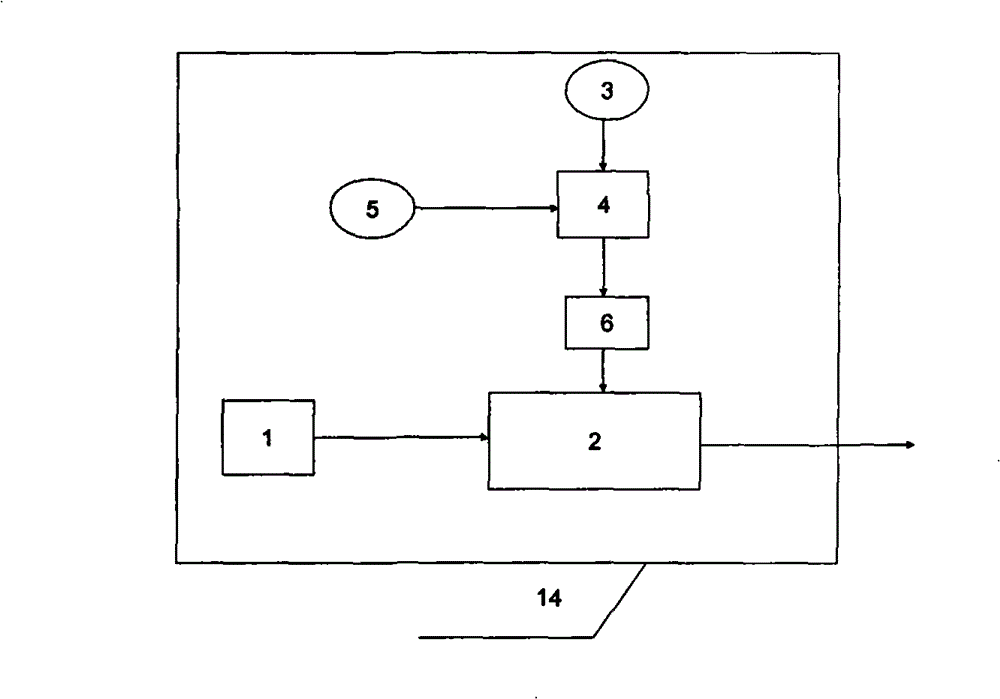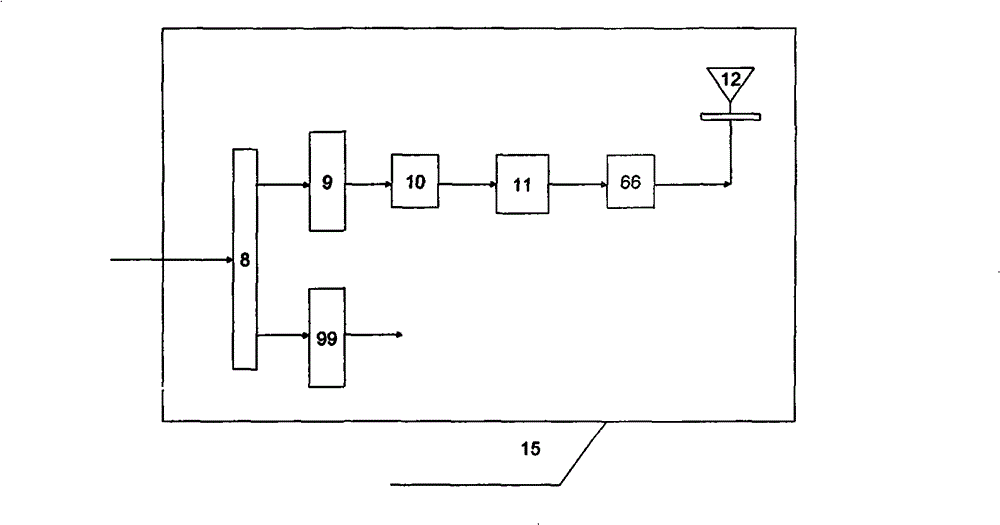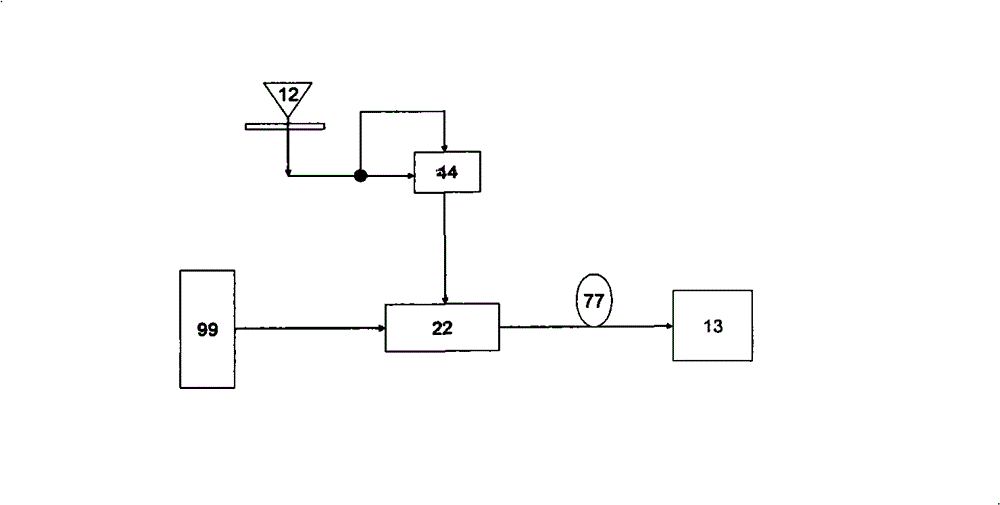System for generating single side band high-frequency optical fiber millimeter wave and reusing wavelength
An optical millimeter-wave and millimeter-wave technology, applied in the field of optical fiber wireless communication systems, can solve the problems of no large DC component at the center carrier, low sensitivity of single-sideband signal receivers, and inability to reuse the center carrier. The effects of fiber dispersion, resistance to fiber dispersion, and bandwidth reduction
- Summary
- Abstract
- Description
- Claims
- Application Information
AI Technical Summary
Problems solved by technology
Method used
Image
Examples
Embodiment Construction
[0054] The present invention will be described in detail below with reference to specific experimental examples and accompanying drawings.
[0055] Depend on figure 1 As shown, the components of the high-frequency millimeter-wave generation module 14 are described as follows:
[0056] Laser 1, used to generate a single longitudinal mode optical signal of a specified wavelength, can be DFB-LD; single-arm optical intensity modulator 2, used to generate a double-sideband modulation signal that suppresses odd-numbered sidebands, can be lithium niobate (LiNbO 3 )Modulator. The driving signal of the modulator 2 in this embodiment is: the downlink baseband data 5 and the local oscillation signal 3 with a frequency of f are mixed at the mixer 4 to realize up-conversion, and then amplified by the electric amplifier 6, and then input To Modulator 2, the modulator is driven to produce a double sideband signal that suppresses the odd sidebands. The signal bandwidth is also doubled due ...
PUM
 Login to View More
Login to View More Abstract
Description
Claims
Application Information
 Login to View More
Login to View More - R&D
- Intellectual Property
- Life Sciences
- Materials
- Tech Scout
- Unparalleled Data Quality
- Higher Quality Content
- 60% Fewer Hallucinations
Browse by: Latest US Patents, China's latest patents, Technical Efficacy Thesaurus, Application Domain, Technology Topic, Popular Technical Reports.
© 2025 PatSnap. All rights reserved.Legal|Privacy policy|Modern Slavery Act Transparency Statement|Sitemap|About US| Contact US: help@patsnap.com



